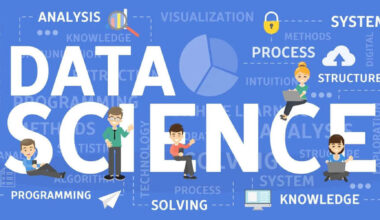Front-end development has become increasingly important in the digital age, as more and more businesses take their operations online. As a result, there has been an explosion in the number of tools and technologies available to front-end developers. One such tool is React, a JavaScript library for building user interfaces. In this article, we will explore the history of React, compare it with other frameworks, and discuss why you should choose to React for front-end development in 2023. We will also look at the best ways to learn React in 2023.
History of React JS
React was developed by Facebook in 2011 and was released as an open-source project in 2013. Its initial release was met with a lot of excitement from the developer community due to its ability to handle complex and dynamic user interfaces. Over the years, React has undergone several major updates, including the introduction of React Native, a framework for building mobile apps.
Introduction to React JS
React is a JavaScript library for building user interfaces. It is designed to be declarative, meaning that developers can describe what the user interface should look like, and React takes care of the details of rendering it. React uses a virtual DOM (Document Object Model) to manage the user interface, which means that updates to the UI are efficient and fast.
Comparison with Other Frameworks
When it comes to web development, there are numerous frameworks and libraries available. Among them, React.js, Ember, Vue, and Angular are four of the most popular ones. Each of them has its own unique features and benefits. In this article, we will compare these four frameworks in detail and provide coding examples to help you choose the one that best suits your project requirements.
React.js
As mentioned above, React.js is a popular and widely-used JavaScript library for building user interfaces known for its simplicity, flexibility, and scalability. React.js uses a virtual DOM, which makes it faster than many other libraries. It also allows you to reuse components, which reduces the amount of code you need to write.
React.js is easy to learn and use, making it a popular choice for developers of all skill levels. It has a large and active community that provides support and resources for developers. React.js is often used in combination with other libraries and frameworks, such as Redux and Next.js.
Code Structure:
const App = () => {
return (
Hello, React.js!
);
}
export default App;
Ember
Ember is a JavaScript framework that is used for building web applications. It is known for its convention over configuration approach, which makes it easy to use and learn. Ember has a built-in templating language, which makes it easy to create complex UIs.
Ember also has a strong focus on testing and documentation, which makes it a popular choice for large-scale applications. It is often used in combination with other libraries, such as Ember CLI and Ember Data.
Code Structure:
import Ember from 'ember';
export default Ember.Component.extend({
name: 'Ember',
actions: {
sayHello() {
console.log(`Hello, ${this.get('name')}!`);
}
}
});
Vue
Vue is a progressive JavaScript framework that is used for building user interfaces. It is known for its simplicity and ease of use. Vue has a small learning curve, which makes it a popular choice for beginners.
Vue is also highly customizable and can be used with other libraries and frameworks, such as Vuex and Nuxt.js. It has a large and active community that provides support and resources for developers.
Code Structure:
<template>
<div>
<h1>Hello, Vue!</h1>
</div>
</template>
<script>
export default {
name: 'Vue'
}
</script>
Angular
Angular is a TypeScript-based framework that is used for building web applications. It is known for its robustness, scalability, and flexibility. Angular has a built-in templating language, which makes it easy to create complex UIs.
Angular also has a strong focus on testing and documentation, which makes it a popular choice for large-scale applications. It is often used in combination with other libraries, such as RxJS and NgRx.
Code Structure:
import { Component } from '@angular/core';
@Component({
selector: 'app-root',
template: `
<div>
<h1>Hello, Angular!</h1>
</div>
`
})
export class AppComponent {}
To sum up, while React.js, Ember, Vue, and Angular all have their strengths and weaknesses, the best framework for a particular project ultimately depends on the specific needs and goals of that project. React.js excels in its component-based architecture and efficient rendering, making it a popular choice for building complex and dynamic user interfaces. Ember offers a strong convention-over-configuration approach and robust routing capabilities, making it a good choice for building large-scale, complex web applications. Vue offers a simple and easy-to-learn syntax, making it a great choice for small to medium-sized projects. Angular offers a comprehensive set of features and powerful data-binding capabilities, making it an excellent choice for large, enterprise-level applications.
By understanding the differences between these frameworks and carefully evaluating the requirements of your project, you can make an informed decision about which one to choose. Ultimately, the goal is to create high-quality applications that meet the needs of your users, and any of these frameworks can help you achieve that goal.
Why Choose React for Front-End Development in 2023?
There are many reasons why you should choose React for front-end development in 2023. Some of the key benefits of using React include the following:
- Performance: React’s virtual DOM makes it very fast and efficient, which can improve the user experience.
- Reusability: React’s component-based architecture makes it easy to build reusable UI elements, which can save time and reduce code duplication.
- Large and Active Community: React has a large and active community of developers, which means there is a lot of support available and many resources to learn from.
- Compatibility: React can be used with a wide range of tools and technologies, making it a versatile choice for front-end development.
Best Way to Learn React JS  in 2023
in 2023
If you’re looking to learn React in 2023, there are many resources available to help you get started. Some of the best ways to learn React include:
- Online Courses: There are many online courses available that can teach you the basics of React, as well as more advanced topics. Some popular online learning platforms include Udemy, Coursera, and edX.
- Tutorials: There are many tutorials available online that can help you learn React, from beginner-level introductions to more advanced topics. Some popular tutorial sites include React.js.org and Medium.
- Books: There are many books available that can help you learn React, from beginner-level introductions to more advanced topics. Some popular books include “React.js Essentials” by Artemij Fedosejev and “Learning React” by Kirupa Chinnathambi.
- Join top IT colleges or get enrolled in the Best BCA Colleges in Ghaziabad and attend masterclasses, workshops, online webinars and seminars of industry experts.
Wrapping Up
In conclusion, React is a powerful and versatile tool for front-end development, with many advantages over other frameworks. Its performance, reusability, and large community make it a great choice.











4 comments
Hi there! Someone in a Facebook group shared this site with us so I came to give it a look. I’m definitely loving the information.
Thank you, I’ve just been searching for information about this topic for a while.
This information is good. I understand and respect your clear-cut points.
Greetings! Very helpful advice within this article! It is the little changes that produce the largest changes. Many thanks for sharing!
Comments are closed.